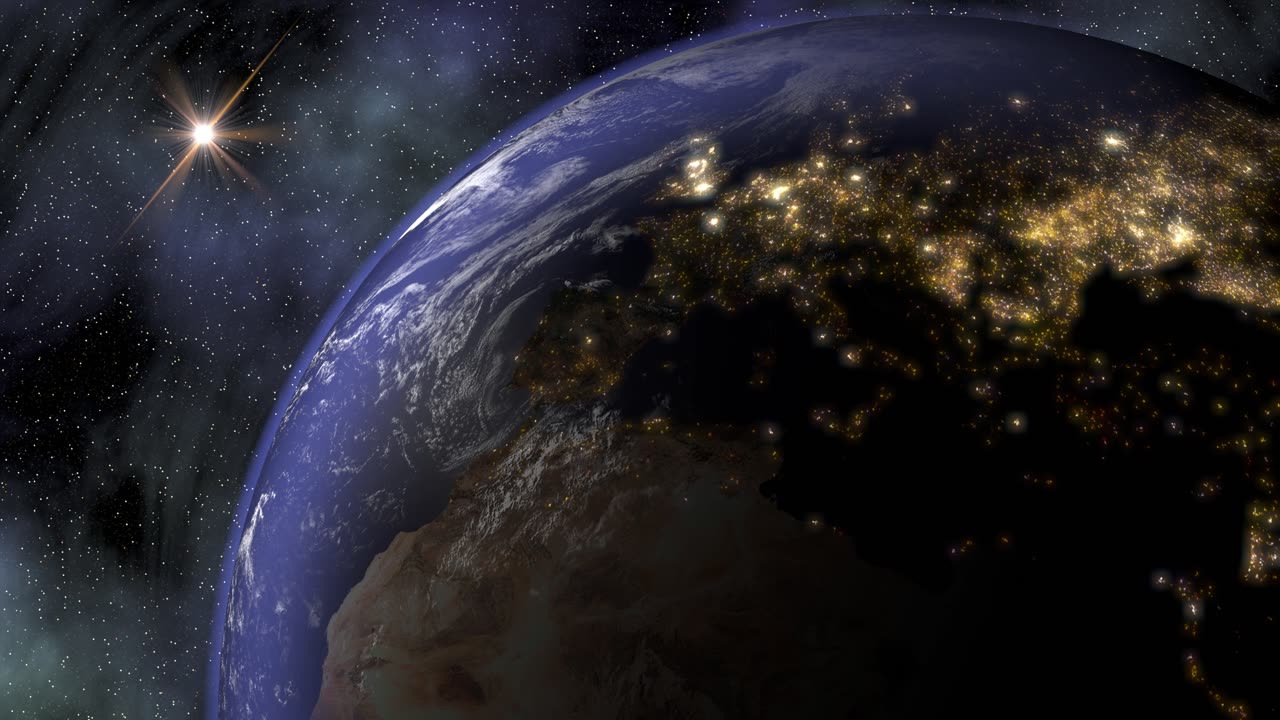Premium Only Content

Our Moon rotating Earth
The Moon, Earth's closest celestial neighbor, presents itself in various captivating ways as we observe it from our planet. Its appearance, or what we commonly refer to as the phases of the Moon, is a result of the interplay between the positions of the Moon, Earth, and the Sun.
When we look up at the night sky, we see different phases of the Moon throughout its monthly cycle. The cycle begins with the New Moon phase, where the Moon is positioned between the Earth and the Sun. In this phase, the side of the Moon that is illuminated by the Sun is facing away from us, making it appear completely dark or invisible.
As the Moon continues its orbit around the Earth, we gradually observe a thin crescent of light emerging on its right or left side. This is the Waxing Crescent phase, followed by the First Quarter phase, where we see half of the Moon illuminated.
Next comes the Waxing Gibbous phase, where the illuminated portion of the Moon continues to increase until it reaches its maximum illumination. This leads to the Full Moon phase, where the entire face of the Moon that is visible from Earth is brilliantly lit up.
After the Full Moon, the Moon begins its journey towards its next set of phases. It enters the Waning Gibbous phase, gradually reducing its illumination until it reaches the Third Quarter phase, where we see half of the Moon illuminated once again.
Following the Third Quarter, the Moon enters the Waning Crescent phase, appearing as a thin crescent before it returns to the New Moon phase, and the cycle starts anew.
The changing phases of the Moon are caused by the relative positions of the Sun, Earth, and Moon. The sunlight falls on different portions of the Moon's surface as it orbits around the Earth, creating the varying levels of illumination that we observe from our vantage point.
The Moon's phases not only provide us with a beautiful celestial sight but also serve as a practical way to mark the passage of time. Ancient civilizations used the Moon's phases as a basis for calendars, and today, they continue to influence cultural traditions and religious observances.
So, the next time you gaze at the night sky and marvel at the Moon, remember that its appearance is ever-changing, reflecting the dance between the Sun, Earth, and our lunar companion.
-
 56:28
56:28
Glenn Greenwald
7 hours agoDocumentary Exposing Repression in West Bank Wins at Oscars; Free Speech Lawyer Jenin Younes on Double Standards for Israel's Critics | SYSTEM UPDATE #416
87.1K76 -
 1:03:34
1:03:34
Donald Trump Jr.
9 hours agoZelensky Overplays His Hand, More Trump Wins, Plus Interview with Joe Bastardi | Triggered Ep.221
145K121 -
 1:13:16
1:13:16
We Like Shooting
17 hours ago $2.51 earnedDouble Tap 399 (Gun Podcast)
39.9K -
 1:00:20
1:00:20
The Tom Renz Show
1 day agoTrump Schools Zelensky, The Epstein Files FAIL, & What RFK Will Mean for Cancer
41.1K18 -
 42:47
42:47
Kimberly Guilfoyle
10 hours agoThe Trump effect: More Major Investment, Plus America First at Home & Abroad. Live w/Ned Ryun & Brett Tolman | Ep. 201
122K43 -
 1:29:23
1:29:23
Redacted News
9 hours agoWW3 ALERT! Europe pushes for war against Russia as Trump pushes peace and cutting off Zelensky
157K275 -
 57:56
57:56
Candace Show Podcast
13 hours agoHarvey Speaks: The Project Runway Production | Ep 1
151K93 -
 56:31
56:31
LFA TV
1 day agoEurope’s Relationship With America Is Over | TRUMPET DAILY 3.3.25 7PM
43.3K7 -
 2:04:45
2:04:45
Quite Frankly
11 hours ago"European Deth Pact, Blackout Data Breach, Epstein" ft. Jason Bermas 3/3/25
44K16 -
 1:32:46
1:32:46
2 MIKES LIVE
8 hours ago2 MIKES LIVE #187 Deep Dive Monday!
24.8K1